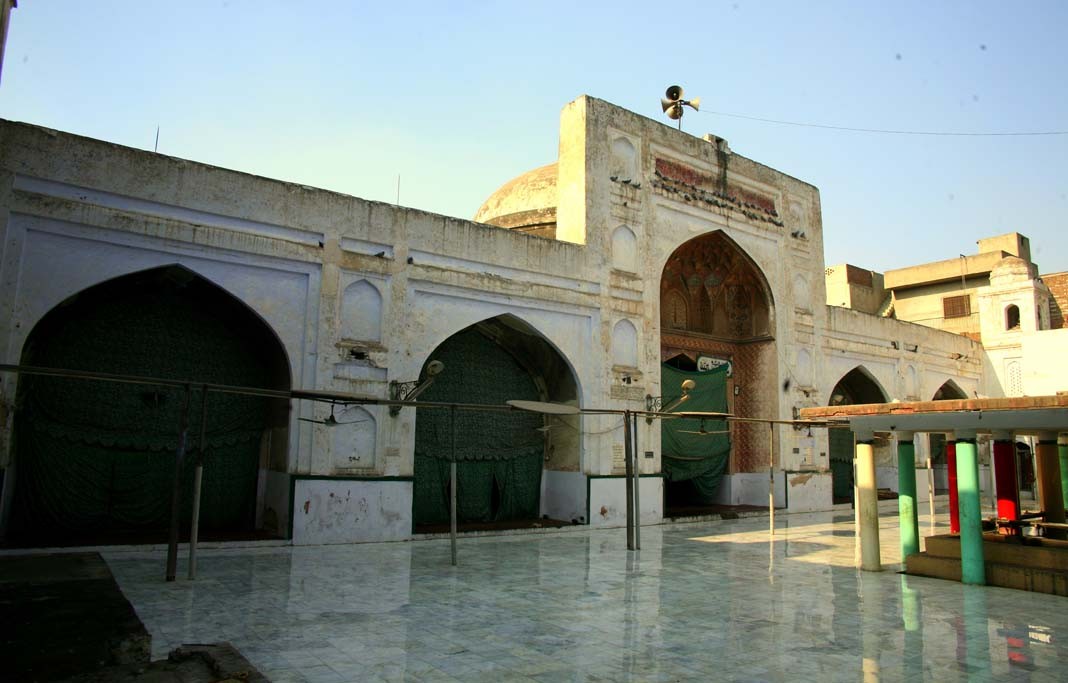
A photofeature on the historical mosque that is a grim picture of neglect at the hands of the authorities

Begum Shahi aka Mariam Zamani Mosque is said to be the first to be built in Lahore during the Mughal Era (1611-1614) by the Emperor Jahangir for his beloved mother Mariam Zamani, popularly known as Jodha Akbar. It is located inside Masti Gate opposite Akbari Gate.
Sadly, today, the historical mosque presents a picture of dilapidation. Besides, piles of shoe boxes and iron wheels have ruthlessly covered much of its face in the Rim Market.
There are different perspectives as to who Mariam Zamani was. According to some historians, she was Jodha Bai while some quote other wives of Emperor Akbar. During the Mughal rule, the mother of the heir to the throne was named as Mariam-ul-Zamani or Mariam-ul-Makani. Hence, the woman the mosque is named after must be the mother of Emperor Jahangir.
It is also the first mosque with a five-bay facade that became a pattern for many mosques later built by the Mughals.
It is a show of expert brick masonry, rendered with plaster. It is a comparatively small structure than Wazir Khan Mosque, though.
The mosque is decorated with rich fresco which can still be seen at some parts of it. But most of it has been whitewashed now. It has a tank for ablution purposes right at the centre of the courtyard, which had been restored to some extent. The courtyard must have been paved with brick tiles in typical Mughal fashion, but today it has been completely re-laid in modern brick stones.
The prayer chamber is an oblong structure with five compartments that are divided by arches. Inside, there is a series of high, deep arched recesses. The central ‘mehrab’ has an arch treated with geometric, floral, and inscriptional stucco ornaments.
The mosque stands out for its unique fresco decoration, with which the whole interior surface of the prayer chamber is covered. The Mosque is decorated with several inscriptions, both Quranic and non-Quranic. Among the non-Quranic inscriptions, the one executed over the arch of the entrance gate and another on the high facade of the prayer chamber are important, as they record the names of the founder and the date of completion of the mosque.
As per historic accounts, the mosque covered an area of 135ft by 127ft which is now encroached upon by iron wheel shops and private residences.
Many historians also state that Masti Gate was known as Masjidi Gate because of the Mariam Zamani Mosque and, in the following years, the name was distorted into Masti Gate.
Maharaja Ranjit Singh temporarily turned the mosque into a gunpowder factory due to which it came to be known as Baroodkhana Wali Masjid. But in 1850, the mosque was returned to the Muslims who then renovated it.
Presently, the condition of the mosque is such that it is almost unnoticeable because of the countless encroachments upon its premises. The Walled City of Lahore Authority needs to pay immediate heed to this historical mosque and restore it to its former glory. In a discussion with Archeology Department staff, they are still planning to restore it.